In the early 20th century, at least two different engineers working independently in different parts of the world, put forward a unique concept for a new railway. It was a monorail balancing on a single rail of wheels by the aid of gyroscopic forces. As a matter of fact, both engineers went further than mere propose—they each built a full-scale working prototype of their invention. Unfortunately, not one of them fledged into a full-blown railway.
The gyro monorail was peculiar. Not only did it balance when in motion, but unlike a bicycle, the monorail stayed upright even when at rest. Even incredibly, when a sideward force was applied to the erect car, instead of toppling over, the car, like a mysterious creature endowed with life, pushed back on the attacker. Whenever the tracks curved, instead of careening outward, as one might expect, the cars leaned inward as a bicycle-rider leans.
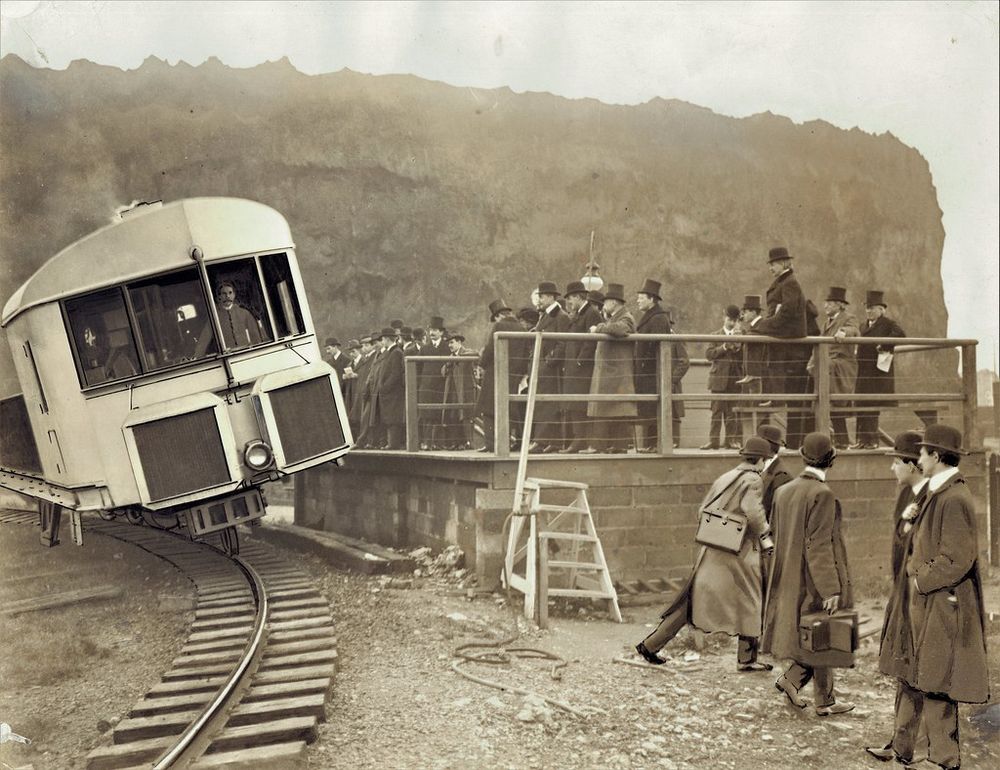
The source of the gyro monorail’s mysterious energy was two counter rotating flywheels mounted on the chassis of the car close to the central axis, with one wheel on either side. Propelled by electric motors, these twin flywheels rendered stability to the car by resisting any disturbances trying to topple the railcar. The gyro monorail’s inherent stability allowed the car to navigate sharper bends, in comparison to conventional railways, which in some cases had to feature a bend radius as large as 7km. Furthermore, a gyro monorail system required only a single rail, which translated to lower costs of construction and maintenance.
The first gyro monorail patent was filed by Irish-Australian engineer Louis Philip Brennan in 1903. He first demonstrated a small working model of his invention to the Army and impressed them so much that the Army Council recommended £10,000 for the development of a full-size vehicle. However, the Financial Department vetoed the idea, but Brennan, with the help of the Army, managed to raise £2,000 from various sources.
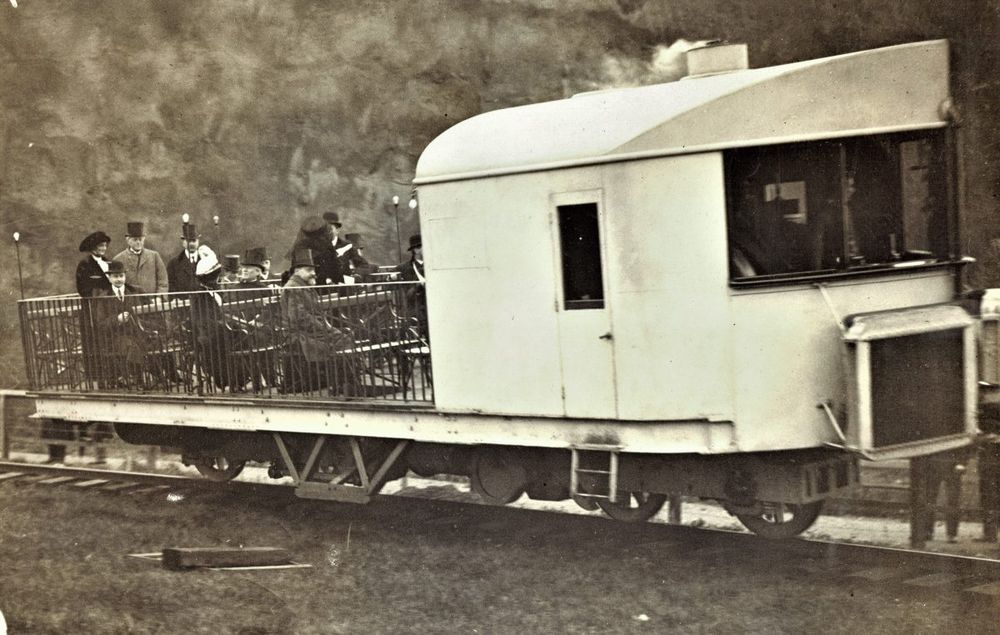
Within this budget Brennan produced a larger model, 6 feet by 1.5 feet, kept in balance by two 5 inches diameter gyroscope rotors. An ordinary gas piping laid out on wooden slippers in the backyard of Brennan's house in Gillingham, Kent, became the test track. To demonstrate how efficiently his invention tackled bends and slopes, Brennan deliberately kept the track crooked and included sharp corners and slopes.
As she comes closer we hear the low hum of her hidden gyroscopes (they will be quite noiseless in the larger model), and are struck by the car's remarkable width in proportion to her, length. She suggests a trim little ferry-boat, and is utterly unlike any known form of railway car. Now the track curves sharply to the right; she takes the turn with the greatest ease, and leans slightly toward the curve. Now the track turns again, and she glides behind the bushes.
Cleveland Moffett, Munsey's Magazine, 1907.
A part of the track consisted of a 70 feet span of wire rope bridge, and over this, Brennan sent his trusted little car carrying his own daughter. Brennan made the car stop in the middle of the rope bridge, with its sole occupant sitting calmly and steadily, and impossibly balanced six feet above the ground.
Coming out on the other side, she enters bravely on the approach to a mono-rail suspension-bridge, a wire rope stretched over the valley that falls away between two small hills—seventy-odd feet of tight-rope-walking for the little car. Straight across she runs from side to side,—no wavering, no tipping,—and then straight back again as the assistant reverses her; then out to the middle of the rope, where they stop her, and there she stands quite still and true, while the gyroscopes hold her. This is something never yet seen in the world a mass of dead matter, weighing as much as a man, balancing itself unaided on a wire!
Cleveland Moffett, Munsey's Magazine, 1907.
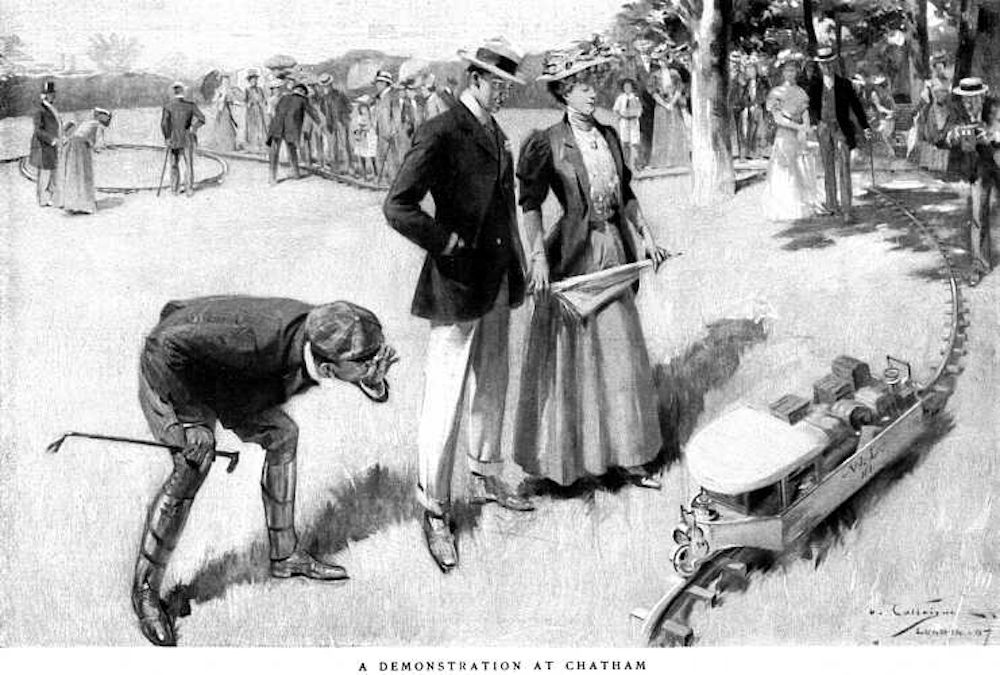
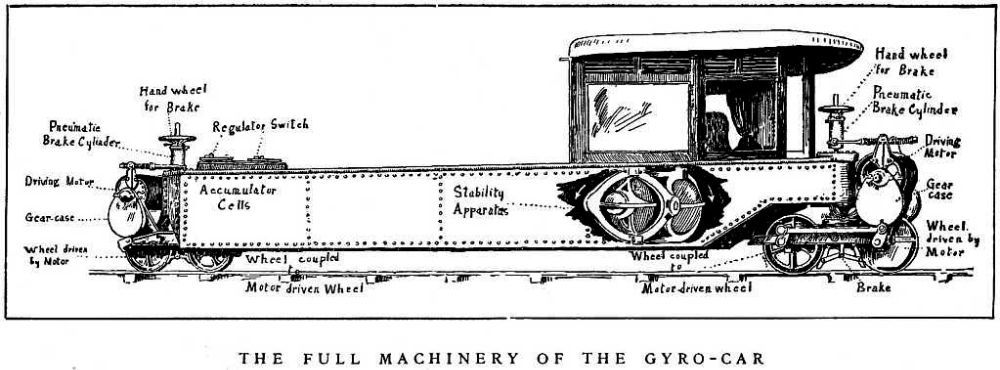

The demonstration in 1907 was largely a success. The Army was still reluctant, but the India Office advanced about £6,000 and a further £5,000 was advanced by the Durbar of Kashmir to develop the monorail for the North West Frontier region. With another £2,000 from the India Office, Brennan built a forty feet vehicle powered by a 20 horsepower petrol engine. On 15 October 1909, the railcar ran under its own power for the first time carrying 32 people around the factory.
Brennan was ambitious. “In speed we shall surpass all that the world has known; for with friction reduced to a minimum and side-thrusts practically eliminated, there is no reason why our mono-rail trains should not make one hundred and twenty, one hundred and fifty, or even two hundred miles an hour with absolute steadiness and far more safety than is possible on existing trains,” Brennan told journalist Cleveland Moffett.
“You must bear in mind that these cars will be different from any cars thus far known,” Brennan continued. “They will not be cars at all, but great, beautiful parlors, where we shall travel almost without knowing that we are traveling; where we shall find the comforts and luxuries of a first-class hotel, brilliant dining-rooms like saloons on the best ocean liners, spacious libraries and smoking-rooms, entertainment-rooms for music or dancing, and, of course, large, well-ventilated sleeping-rooms instead of the wretched bunks behind dusty curtains."
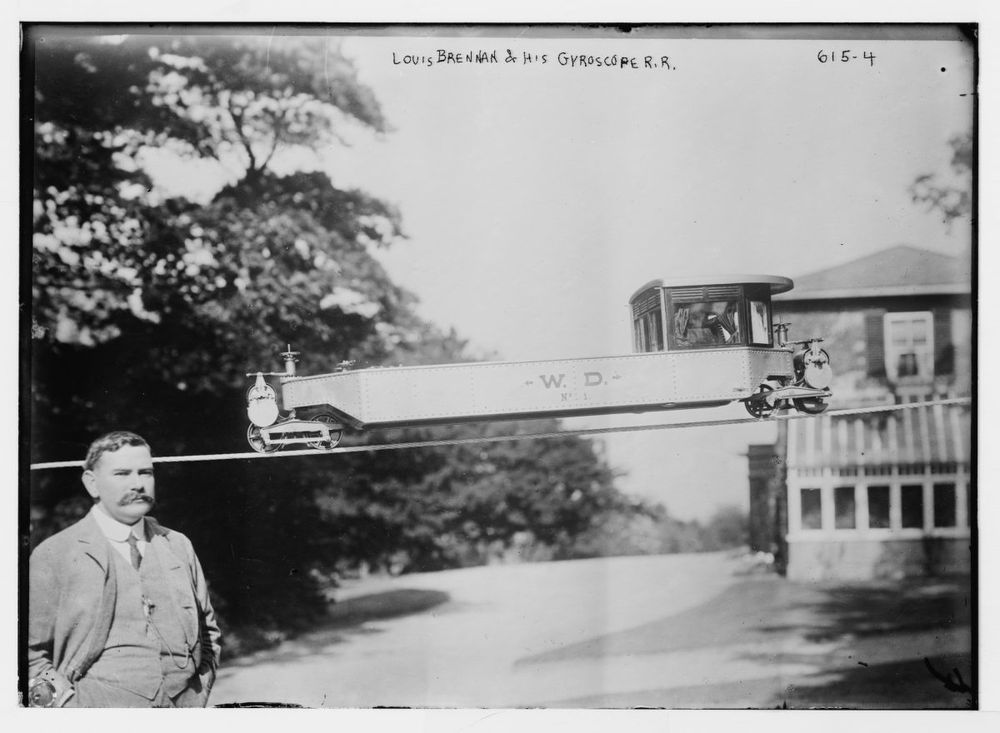
Brennan demonstrated the monorail again at the Japan-British Exhibition at the White City, London in 1910. This time the monorail car carried 50 passengers around a circular track at 20 miles per hour. Among the passengers was Winston Churchill, whose presence helped Brennan garner great support for his monorail project. Despite the initial enthusiasm, the monorail failed to attract investors, and Brennan was forced to abandon his dream.
While Brennan was busy completing the testing of his vehicle, August Scherl, a German publisher and philanthropist, announced a public demonstration of another gyro monorail which he had developed in Germany. Scherl's Monorail was also a full-sized vehicle, but smaller than Brennan's, with a length of only 17 feet. It could accommodate four passengers on a pair of transverse bench seats. The gyros were located under the seats, and had vertical axes, while Brennan used a pair of horizontal axis gyros.


The machine’s real inventors were Paul Fröhlich, who designed the righting mechanism, and Emil Falcke, who designed the cars. Scherl merely financed the project, and when he saw that the car failed to attract significant financial support, Scherl wrote off his investment in it.
The major drawback of the gyro monorail and the one that led to its undoing, was its reliance on the constantly powered gyroscopes to stay upright. And despite its many advantages over conventional dual rail systems, including the promise for increased speeds, investors feared that a sudden loss of power to the gyroscope would cause the train to topple over. Brennan assured people that if a gyroscope were to lose power it would take several hours for the flywheel to spin down to zero, providing the gyro monorail driver plenty of time to deploy the stabilizing legs. But investors had already made up their minds.
Gyroscopes have found use in many modern applications where stability is desired, such as in aircrafts, submarines and space telescopes, but never was it applied to keep a railway upright.
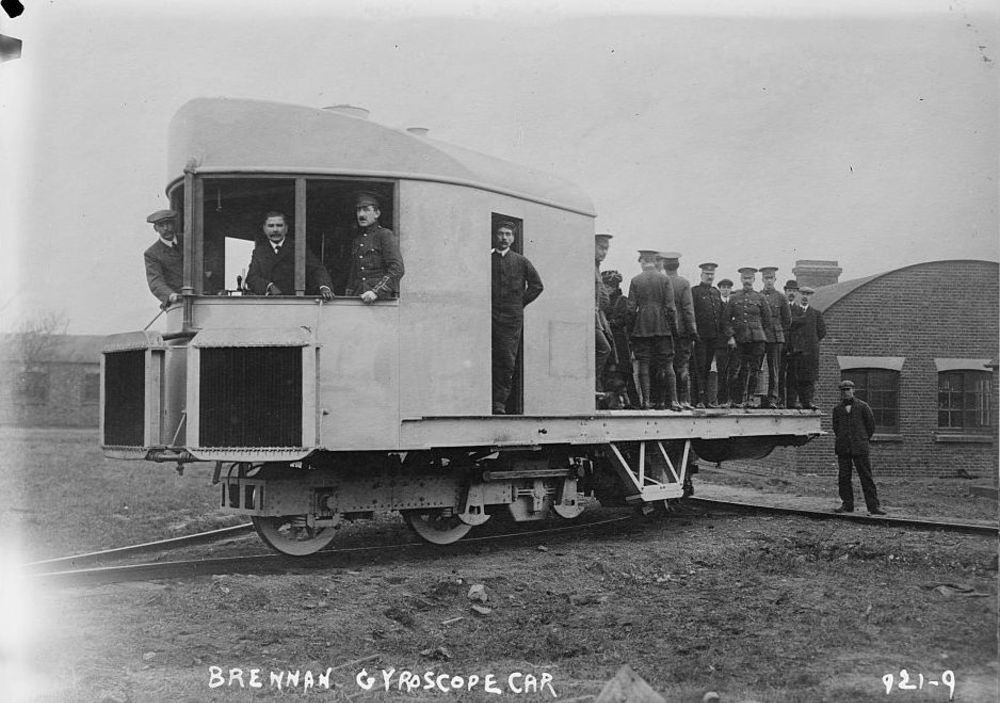

After his failure with the gyro monorail, Brenna found work in the Army’s munitions inventions department, where he began working on an experimental helicopter. Brennan received much support from the Air Ministry as well as the British Ministry of Munitions, but after a demonstration flight ended in a crash, the air ministry gave up funding the Brennan helicopter project, much to Brennan's disappointment.
Brennan died six years later in 1932 in a road accident.



Comments
Post a Comment